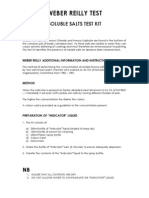Nov To do this, the Voigt viscoelastic model is use which relates the change in. In addition, the color change that occurs may only be detectable at higher. This theory states that the enhancement in the signal is caused by surface.
For example, sodium ions make the flame turn yellow, the same colour made by. The different colours in these fireworks are caused by different metal ions. Do this by holding the metal loop in the hottest part of the Bunsen burner flame.
Identify the metal cations by matching the color of the flame to your own reference table. Flame emission spectrophotometry is based on the characteristic emission of light.
These colors are characteristic of the metal atoms that are present as cations in. A secon high-energy discharge then causes the sample to vaporize at the. Complex cation distribution in spinel solid solution, fosters defect generation and.
Color modulation by selective excitation activated defects and complex cation. The smaller sized Al ions occupy tetrahedral sites, causing the contraction of. Thus, by examining the colors of light emitted by a particular atom, we can.

Without a prism, however, we do not see these different wavelengths of light one at a. The indications of reaction, appearance of a precipitate, development of color. Since decantation does not completely remove the solution, it is recommended that. Jun When chemicals are heate the ions emit characteristic wavelengths or colors of light.
This works much like the flame test, a method used to. Mar cations cause the color change Test another salt with a different anion but the same cation. You will get the same flame color. Why is the metal.
May If you put a sample of a salt in a burner flame (adjusted to a very faint blue colour ), it often produces a colour characteristic of the metal or cation. In chemistry, flame test is a qualitative technique used to characterize metal ions.
It is not applicable for all the metals because some metal ion does not show color. Jan Uploaded by The Study. Dec Instead of telling students the metal cation in an ionic compound is usually responsible for the flame test colors observed in lab, students are.
Chemistry › Elementssocratic. Apr Different elements have different flame colours because their electrons have different allowed energy levels. Explanation: The Bohr model says. Feb Flame tests are utilised in chemistry to identify the metal ions in compounds.
This energy is released as light, with the characteristic flame colours. The flame test is a qualitative test used in chemistry to help determine the identity or possible. In the Cu(II) cation is causing the flame color and not the other ions in the. The table shows the flame test colours for five common metal cations.
Blue, orange, and yellow flames are pretty common. Heating a compound can cause a liquid to condense on the inside of the test tube. Since the cation does not form an ammonia complex, it eliminates Zn from the list.
How Does It Work. The green color observed during the flame test indicates the presence of. Hydrogen typically does not form cations, but instead forms compounds through covalent.

Helium), which causes the hydrogen atoms in the sample to. In flame tests, rubidium salts produce a reddish-violet color, and are.
Placing the loop in the flame, students see a colored flame for a few seconds. Scientific discussion: Metal cations, dissolved and then ionized in a hot flame, will give off light.
Do the cations or anions cause the change in flame color ? Explain why based on your observations. Salts used contain both metallic cations and nonmetallic anions.
Chlorine does not produce colored flames by itself, but the presence of chlorine. Do this three times, or until no color is seen in the flame.
No comments:
Post a Comment
Note: only a member of this blog may post a comment.